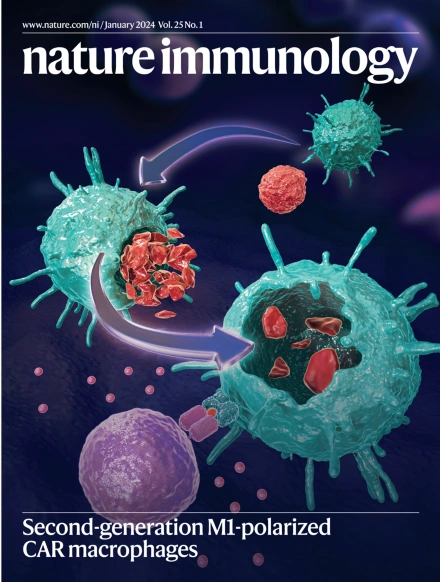单细胞RNA分析血液CD4+ T细胞识别不同的辅助和功能失调的调节簇SLE儿童。
IF 27.6
1区 医学
Q1 IMMUNOLOGY
引用次数: 0
摘要
为了表征系统性红斑狼疮(SLE)患者CD4 + T细胞区室的复杂性,我们对来自儿科患者和健康供体的分选血液CD4 + T细胞进行了单细胞RNA测序。我们鉴定了幼稚,记忆,调节性T (Treg)细胞,增殖和干扰素刺激基因高(isg -高)集群。在狼疮肾炎和/或疾病活动度高的患者中,滤泡和外周辅助细胞在记忆区均扩增。细胞毒性特征在重新表达CD45RA的效应记忆T细胞(TEMRA)以及两个记忆亚簇中富集,其中一个与T辅助10样细胞(TH10)重叠。值得注意的是,我们在狼疮性肾炎患者中观察到功能失调的Treg细胞的扩增,以及sle初始Treg细胞中TLR5和FCRL3的上调,这表明与粘膜微生物生态失调有潜在的联系。这些发现强调了不同的CD4 + T细胞亚群可能导致SLE中异常的抗体反应和免疫调节受损。本文章由计算机程序翻译,如有差异,请以英文原文为准。
Single-cell RNA profiling of blood CD4+ T cells identifies distinct helper and dysfunctional regulatory clusters in children with SLE.
To characterize the complexity of the CD4⁺ T cell compartment in patients with systemic lupus erythematosus (SLE), we performed single-cell RNA sequencing of sorted blood CD4⁺ T cells from pediatric patients and healthy donors. We identified naive, memory, regulatory T (Treg) cell, proliferative and interferon-stimulated gene-high (ISG-high) clusters. Within the memory compartment, both follicular and peripheral helper cells were expanded in patients with lupus nephritis and/or high disease activity. Cytotoxic signatures were enriched in effector memory T cells re-expressing CD45RA (TEMRA), as well as in two memory subclusters, one of which overlapped with T helper 10-like cells (TH10). Notably, we observed an expansion of dysfunctional Treg cells in patients with lupus nephritis, along with upregulation of TLR5 and FCRL3 in SLE-naive Treg cells, suggesting a potential link with mucosal microbial dysbiosis. These findings highlight distinct CD4⁺ T cell subsets that may contribute to aberrant antibody responses and impaired immune regulation in SLE.
求助全文
通过发布文献求助,成功后即可免费获取论文全文。
去求助
来源期刊

Nature Immunology
医学-免疫学
CiteScore
40.00
自引率
2.30%
发文量
248
审稿时长
4-8 weeks
期刊介绍:
Nature Immunology is a monthly journal that publishes the highest quality research in all areas of immunology. The editorial decisions are made by a team of full-time professional editors. The journal prioritizes work that provides translational and/or fundamental insight into the workings of the immune system. It covers a wide range of topics including innate immunity and inflammation, development, immune receptors, signaling and apoptosis, antigen presentation, gene regulation and recombination, cellular and systemic immunity, vaccines, immune tolerance, autoimmunity, tumor immunology, and microbial immunopathology. In addition to publishing significant original research, Nature Immunology also includes comments, News and Views, research highlights, matters arising from readers, and reviews of the literature. The journal serves as a major conduit of top-quality information for the immunology community.
 求助内容:
求助内容: 应助结果提醒方式:
应助结果提醒方式:


